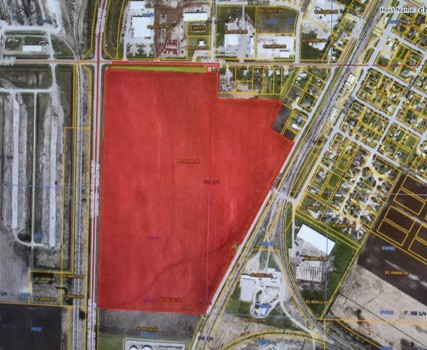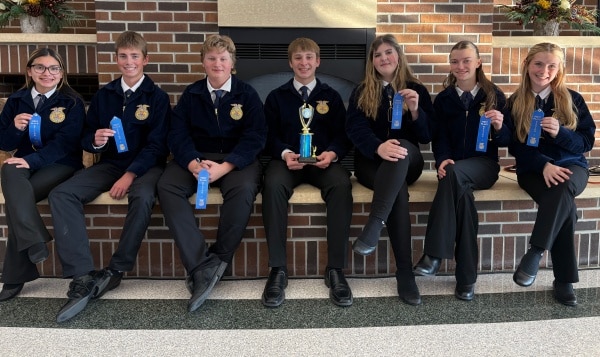Members of the Crookston City Council, Crookston Housing and Economic Development Authority (CHEDA) Board, City Administrator Shannon Stassen, Crookston City Finance Director Angel Weasner and CHEDA Executive Director Craig Hoiseth met with Paul Steinman and Mikaela Huot of Springsted, Inc. Tuesday morning to discuss ways the City can provide gap financing for new development in Crookston.
The group used the planned construction of Soybean Crush Plant and Biodiesel Facility by Epitome Energy as with hypothetical figures as an example of what gap financing from the City of Crookston might look like with a new development including the limitations and challenges. Also mentioned during the meeting were a few local businesses that either currently have development plans in the works such as Vertical Malt or may have such plans in the future like American Crystal. The group also talked about the success of the New Flyer development district back in 1994; the planned Fournet Building TIF or Tax Increment District and Monday night’s information from RiverView Health that they will be coming to City Council soon to ask for bonding assistance.
Hoiseth said the group learned about different tools to help with development in Crookston. “Our meeting today centered around following through with the TIF discussion that occurred at City Council. This is more geared toward if you were going to do revenue bonds or some other type of financing vehicle that could help developers differently. Paul and Mikaela gave us really good schooling on how those other tools could be used to maximize effectiveness. TIF Bonding would be one way or pay as you go and there is tax abatement which we’ve done in the past. The group was there to ask questions and get a better understanding of how we could assist development in Crookston in the future.”
A new development such as a soybean crush plant would fall under financing termed as an Economic Development District which carries up to a nine-year window where tax increment can be used for the new development said, Huot. “Economic Development Districts is what would be looked at for this type of development tax increment financing districts. The maximum is eight year of receipt after the first year of the collection so nine years. Typically, the term of the bonds matches the term of the revenue stream. The term of the TIF District is nine years therefore if we’re matching the debt service with the revenues that would be a nine-year term as well.”
Using an economic development district, Huot said a $10 million City of Crookston investment would need hypothetically need a property with about a $75 million market value. “At this time, it is unknown what the value of the project would be. We haven’t seen any financial information on what a business investment is, or the value would be. At this point, we don’t what know how much tax increment would be available that could support any kind of City investment. It is unknown at this point what the City participation level could be based on the value of the project. Based on the hypothetical value of $75 million in value it appeared that could support about a $10 million City investment.”
An economic development district with new development also differs from the more common type of TIF District which is for redevelopment like the Fournet Building and has a longer collection explained Steinman. “The Fournet project is a redevelopment project and is a redevelopment tax district. This biodiesel facility is more of an economic development bare ground type of project, so that’s an economic development district. The Fournet building would have a 25-year, probably a 20-year collection of increment. The larger project would have a potential nine-year collection.”
There is also a significant amount of risk incurred with new development bonding, or TIF districts explained Hoiseth. “There are different elements of risk based on different types of bonds that are issued and whether they are a general obligation bond or not. From the City’s standpoint, we want to focus more on infrastructure. We do that as a City; we’re good at it. Putting in roads, putting in water and sewer and make sure that we continue to deliver that to the customer. I think if we were to bond we could do so geared more toward the infrastructure and work collaboratively with the State of Minnesota if there are any other programs or grants available where we could leverage our dollars to gain maximum benefit for infrastructure.”
If an ask for City investment comes for a crush plant or other facility there are programs funded by the state government that could be used to match some of that cost. One of those programs is the Greater Minnesota Business Development Infrastructure Grant which will provide for 50 percent of the capital costs of public infrastructure to expand or retain jobs in the area, increase the tax base, or expand or create new economic development. These programs would mean the City needs to work closely with its local legislatures to help drive appropriations in the future explains Hoiseth. “There are a lot of programs funded through the State. DEED is one of the vehicles that fund those. We need to have appropriations for some of those grants and some of those financing tools at the legislature. We want to make sure that we have our representatives, our Kiels and Johnsons, basically carrying that message forward for us to make sure the appropriations are made for Greater Minnesota and particularly up here in Crookston.”
Developing infrastructure has an added benefit in that it can reclassify the City’s investment from taxable to tax-exempt and open the door for conduit financing explains Huot. “If the City is looking at issuing bonds for financing based on what the use of the proceeds is would determine if it was taxable or tax-exempt. Typically, infrastructure costs would be classified as tax-exempt which would be lower interest rates. We didn’t have significant discussions on alternate financing mechanisms such as RiverView, but there could be potential for other conduit financing based on the cost. If the City focused primarily on the infrastructure improvements through bonds most likely those would be tax exempt.”
The proposed site of construction for a crush plant would be an ideal candidate for infrastructure investment by the City explains Hoiseth. “The south end of Crookston is kind of unique in that all the infrastructure is on the north end of the site. We want to be able to make sure we can bring the infrastructure from the north end to the south, which is half a mile. Then the building up of the roads on the east side of that and perhaps coming in from the south of [Highway] 75. In addition to that, we have some railroad stuff that needs to occur. There is quite a bit of infrastructure – water, wastewater, sewer, roads, curb/gutter – all those things have to be brought into account. Now we are just exploring what we can we do and how can we best serve our customers.”
During Monday night’s council, meeting RiverView Health CEO Carrie Michalski told the council that RiverView was planning to come before the council to request bonding in the coming weeks. According to Steinman this type of bonding is called conduit financing and uses the City’s tax-exempt status to lower interest rates for an organization like RiverView Health. “So RiverView is looking a conduit debt for about $47 million. What that means is RiverView would be asking the City to use its tax exemption to borrow money. RiverView has their bankers, their finance folks, but what they don’t have it the ability to borrow on a tax-exempt basis which means their interest rates would be cheaper. That’s what conduit debt is basically, asking the City to use their tax exemption status to get the best interest rate possible.”
There has been no official ask from RiverView Health, Epitome Energy or any other development for City investment currently as the group was just gaining insight into what those asks would entail if they come down the pipeline.





